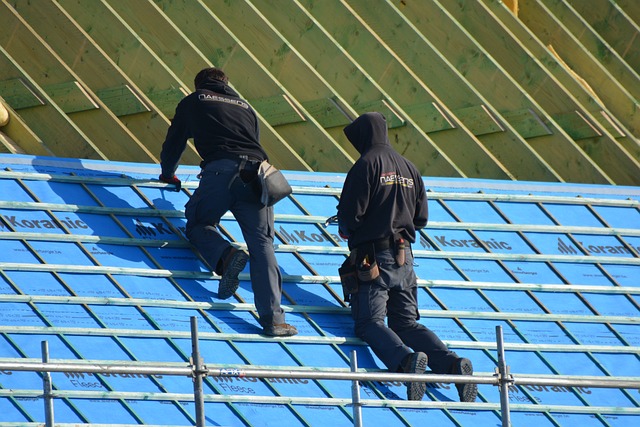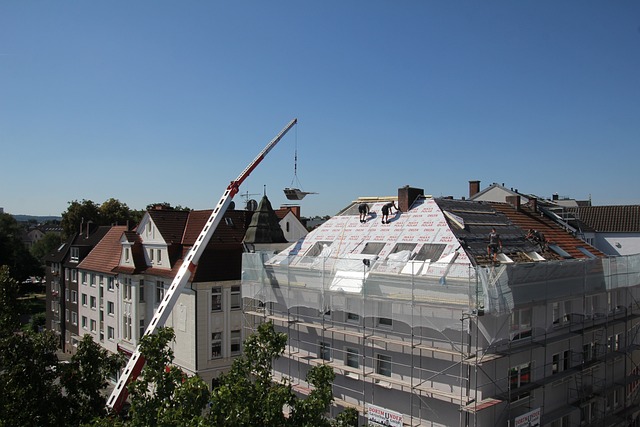Roof protective coatings, a roofer's key tool, extend roof life by shielding against elements like water, UV light, and extreme temps. Applying these coatings involves cleaning, repairing, and evenly applying the product, followed by curing for optimal durability. Selection depends on climate, material type, and exposure, with options offering water-repellency, UV resistance, and temperature tolerance. Regular application enhances lifespan, improves energy efficiency, reduces repair needs, and saves homeowners time and money. Roofers should offer protective coating recommendations to provide long-term defense against weather, temps, and fire.
Protecting your roof is an investment in your home’s longevity. Rooftop protective coatings offer a powerful solution, extending the lifespan of your roof and safeguarding against damage caused by the elements. This comprehensive guide delves into the world of roof protective coatings, exploring their benefits, types, application processes, and long-term maintenance requirements. Learn how roofer professionals utilize these innovative solutions to ensure your roof stands the test of time.
- Understanding Roof Protective Coatings: Benefits and Types
- The Application Process: Techniques and Best Practices
- Choosing the Right Coating for Your Roof's Unique Needs
- Long-Term Maintenance: Ensuring Optimal Lifespan Extension
Understanding Roof Protective Coatings: Benefits and Types

Roof protective coatings are an essential tool for any roofer looking to extend the lifespan of their clients’ roofs. These innovative solutions offer a range of benefits designed to safeguard against the elements and prevent premature wear and tear. By applying a protective coating, roofers can significantly reduce the need for frequent repairs and replacements, saving both time and money in the long run.
There are various types of roof protective coatings available, each with its own unique advantages. Some are designed to reflect heat and light, thereby reducing the overall temperature of the roof and minimizing the impact of UV radiation. Others focus on waterproofing, creating a robust barrier against moisture intrusion, which is crucial for preventing leakages and structural damage. Still, there are coatings that combine both features, offering all-around protection that ensures the roof remains in top condition for years to come.
The Application Process: Techniques and Best Practices

The application process for protective coatings involves several techniques and best practices that roopers should adhere to ensure maximum effectiveness and longevity. Initially, the roof must be thoroughly cleaned to remove any dirt, debris, or existing coatings using specialized equipment like pressure washers. This step is crucial as it creates a clean canvas for the new coating to adhere to properly.
Once cleaning is complete, the roofer can assess the condition of the roof’s surface. Minor repairs such as patching leaks or fixing damaged shingles should be taken care of before applying the coating. After preparing the roof, the protective coating is applied using rollers or brushes, ensuring even distribution for optimal coverage. The final step involves curing the coating under suitable conditions, allowing it to develop its full strength and water resistance properties.
Choosing the Right Coating for Your Roof's Unique Needs

When it comes to protecting your roof, selecting the ideal coating is a crucial decision. Every roof is unique, with varying climates, materials, and levels of exposure to elements. For instance, a metal roof may require a different treatment than a traditional asphalt shingled one. A roofer should consider factors like UV resistance, water-repellency, and temperature tolerance when advising clients on protective coatings.
The right coating can significantly extend the lifespan of your roof while also improving energy efficiency. For example, reflective coatings can reduce the amount of heat absorbed by the roof, thereby lowering cooling costs in warmer months. Choosing a coating that aligns with your roof’s specific needs ensures optimal protection and value for years to come.
Long-Term Maintenance: Ensuring Optimal Lifespan Extension

Regular maintenance is key to extending your roof’s lifespan, and one of the most effective strategies a roofer can employ is the application of protective coatings. These advanced solutions create a barrier against the elements, preventing water penetration, UV damage, and other environmental stressors that can compromise the integrity of roofing materials. By investing in these long-term maintenance practices, homeowners can significantly reduce the need for frequent repairs or premature roof replacements.
Protective coatings offer an additional layer of defense, allowing roofs to withstand harsh weather conditions, extreme temperatures, and even fire. A professional roofer can assess your current roofing system and recommend suitable protective coatings tailored to your specific needs. This proactive approach ensures optimal lifespan extension, saving you time, money, and the hassle of repeated repairs over the years.
Protecting your roof is a wise investment, and with the right protective coating, roofer professionals can significantly extend its lifespan. By understanding the benefits and types of these coatings, choosing the suitable option for your specific needs, and adhering to best practices during application, you ensure optimal protection. Regular maintenance plays a crucial role in maximizing the advantages, allowing your roof to withstand the elements for years to come.
